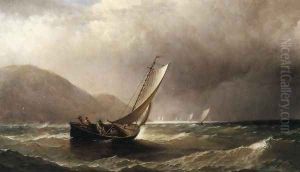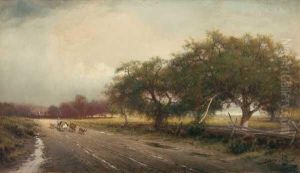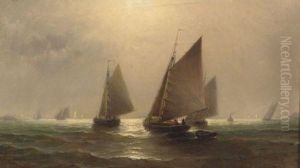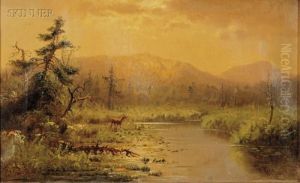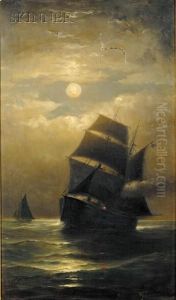William Richardson Tyler Paintings
William Richardson Tyler was an American painter born in 1855, primarily known for his landscape paintings. Although not as widely recognized as some of his contemporaries, Tyler contributed to the American art scene during the late 19th and early 20th centuries. His works often depicted the serene countryside and natural beauty of America, reflecting the influence of the Hudson River School.
Tyler's style evolved over the years, beginning with more detailed and almost photographic representations of landscapes, and later incorporating looser brushwork and a lighter palette as he was influenced by Impressionism. He traveled extensively throughout his career, drawing inspiration from various American landscapes, from the rugged coasts of Maine to the majestic mountains of the West.
Despite his talent, Tyler did not achieve the same level of fame as some of his peers. However, his work was appreciated by art collectors and connoisseurs of his time. He exhibited at several prestigious institutions, including the National Academy of Design and the Boston Art Club. Tyler's paintings are now held in private collections and occasionally appear in auctions, where they are appreciated for their historical value and artistic merit.
William Richardson Tyler's life and career were part of the larger narrative of American art in the era of transition from traditional representational art to the more varied and experimental approaches of the early 20th century. He died in 1921, leaving behind a modest but respected body of work that continues to be studied and admired by art historians and enthusiasts.
